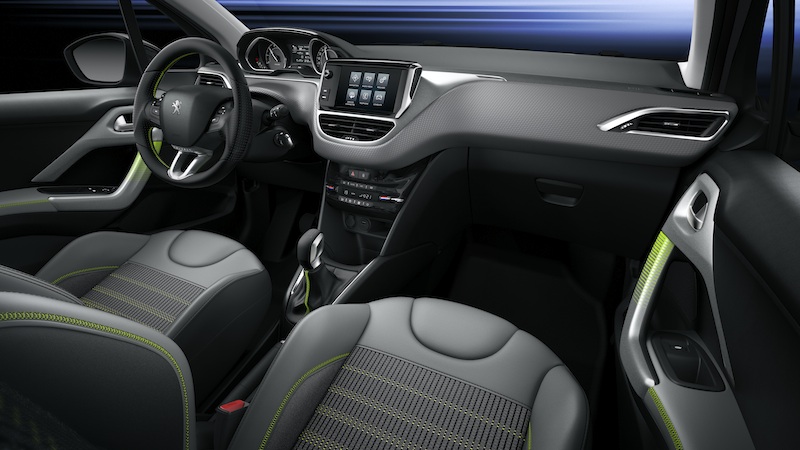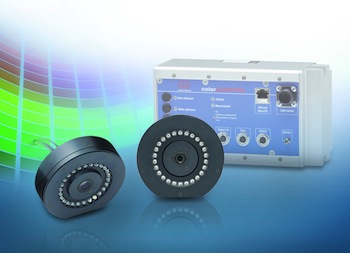New technologies can overcome the specific challenges involved in measuring plastic vehicle components

A large proportion of the take-up of plastics by the automotive industry is constituted by trim components, along with a variety of electrical parts, such as housings, sensors, switches, sockets and displays. In addition, designers switching from glass to polycarbonate headlight lenses is a further trend which is driving demand.
As with metal parts, plastic components have critical quality requirements in terms of function, tolerance and aesthetic appearance. Many automotive mouldings tend to be manufactured in dark, low-contrast colours – most frequently, black, near black or various shades of grey. Although this works for the car designer, it makes accurate viewing and gauging much more problematic.
To measure a black, low-contrast object on a black, low-contrast background presents significant challenges to most non-contact measurement systems, which is where the benefits of the Hawk optical measuring system from Vision Engineering come into play. For example, a Peugeot climate-control fascia panel is moulded in very dark grey and must fit exactly into the climate-control assembly or the unit may rattle. The panel is subcontract-manufactured in high volume and requires several key measurements to be verified.
Both manual and automated
To use an operator manning an optical-only system is not a particularly cost-effective strategy because of the high repetition involved, while an automated, video-only solution would face difficulties because the contrast between black-on-black edges is too low. The optimum solution, therefore, is a combined approach, as used by Hawk.

The human element
Vision’s patented Dynascope technology is said to present a clear, pure optical image to the operator through the expanded exit pupil display head. This image has not been digitised and will not suffer from loss of colour rendition or contrast problems, says the company. Video-only systems struggle when viewing low-contrast, black-on-black, white-on-white or transparent features, as typified by many automotive mouldings. The human brain is by far the most powerful image-processing system available and, for difficult optical subjects, the best results will come from a pure optical image being presented to the operator.
Hawk can be set up to run manually or fully automatically. With the Peugeot climate-control panel moulding, this means that initial pre-production runs can be monitored closely and measured using a completely manual inspection set-up. The flexibility of manual operation means that changes can be accommodated quickly, without the need for skilled programming knowledge. Once volume production has begun, many of these checks can be fully automated, resulting in higher throughput, reduced inspection cycle times and improved repeatability.
Colour coordination
Among the major challenges for automated optical measuring systems required to check high-volume automotive plastic components are factors such as contrast, reflectivity and colour. With this in mind, Micro-Epsilon has developed an inline colour measurement system that allows the colour of injection-moulded automotive parts to be checked automatically, early in the production process, thereby reducing cycle times.
 High-speed, in-process colour measurement is now possible
High-speed, in-process colour measurement is now possibleTo assist in ensuring an exact product colour shade during injection moulding, German company SKZ (Süddeutsche Kunststoff-Zentrum) has developed and tested a method to correlate the difference in colour of an object at different temperatures, which is known as thermochromism behaviour.
With a temperature difference of 20°C, colour deviations of more than two Delta-E units can occur, depending on the colour monitored. Colour measurements performed using the system (along with temperature measurements using an infrared thermometer sensor) enable a master curve to be generated at several different temperature levels that describes the thermochromic behaviour of the coloured plastic component. This allows colour values determined on a warm part to be converted to the actual room-temperature colour values.
These pre-calculated ‘cooling curves’ stored in the system software allow the colour values determined during the de-moulding process to be converted into a reference temperature (at 20°C). In turn, this enables the colour to be checked automatically earlier in the process, which reduces cycle time and optimises productivity and output compared with conventional sample checks.
In terms of operation, first the target is illuminated with white light before the spectrum of reflected light is compared with a white reference. The results are used to calculate CIE-XY colour co-ordinates for wavelengths in the range of 390-780nm. The system works contact-free for a distance of up to 50mm with a measuring geometry of 30°/0°.
The ACS7000 presents a choice of three operating modes to the quality engineer. The first mode measures the Delta-E colour difference to the reference value (a maximum of 15 reference colours can be stored). The second mode measures the reflectivity spectrum, while the third mode measures colours and displays them in the relevant colour space. In addition, users can display and track a trend analysis for individual colours over any period of time.
Importantly for vehicle part-moulding shops, the system is operated via a web browser that also displays measuring parameters, including a black/white balance feature. Applications include vehicle-interior colour measurements, as well as paint inspections.
Material variations
Also focused on colour measurement for plastic part and paint applications are X-Rite’s new Ci7800 and Ci7600 bench-top sphere spectrophotometers – devices that can measure opaque, transparent and translucent materials.
According to X-Rite, older bench-top spectrophotometers can be complicated to configure for proper performance. For instance, it can be difficult to identify the exact measurement location and preview samples to check for defects, resulting in wasted time with trial-and-error measurements. In contrast, the Ci7800 and Ci7600 units automatically adjust instrument settings, track measurement requirements and record images of each sample.
The devices can be used in combination with X-Rite NetProfiler and/or Colour iMatch software for combined reflectance and transmission measurements to formulate to the desired transparency or translucency.
Multi-axis measurement
Of course, plastic automotive parts offer up many measurement challenges beyond colour. For instance, plastic tubing is a common component on many vehicle programmes, and ensuring ovality is among the primary concerns. As a result, NDC Technologies set about developing the Beta LaserMike AccuScan 6012 four-axis diameter and ovality gauge – said to be the industry’s first four-axis gauge for measuring plastic automotive tubing of up to 12mm in diameter. This advancement enables plastic tubing and other extruded automotive product manufacturers to measure diameter and ovality with higher accuracy than two- and three-axis gauges.
The device performs measurements at 2,400 scans per second, per axis (totalling 9,600 measurements per second) and provides single-scan repeatability to 1µm. This means that, with every scan, users get a more accurate average diameter measurement.
According to NDC, a 42% improvement in detecting true ovality is offered over three-axis gauges along with 100% ovality accuracy when the product is aligned with the measurement axes. Furthermore, flaw detection is improved by 25% in comparison with three-axis gauges.
It is a common misconception that engineers cannot predict the performance of a plastic so well as that of steel and aluminium. However, BASF is breaking down that barrier with its Ultrasim technology, which is said to deliver 90-95% accuracy when predicting the performance of vehicle parts moulded using its materials.
To help meet upcoming fuel-efficiency standards, vehicle-makers can use Ultrasim to design and develop lightweight plastic parts. For instance, BASF recently helped Faurecia to convert the steel structure of its seatback frame to plastic while ensuring optimal design, safety and comfort for the occupants.
Beyond achieving a faster development and manufacturing process, Ultrasim allowed Faurecia to design a seat that offers various benefits including total mass savings of 30-40% over the steel version, equating to 2.7kg weight savings per vehicle, a 16-litre volume reduction and a 25mm decrease in seatback mass. Furthermore, the design demonstrated high strength and stiffness equal to that of steel, plus higher energy absorption.
Ultrasim technology has also successfully predicted the performance for lightweight plastic parts in the Opel Astra OPC and BMW i3.






























